Malta
Środek zimy, nieprzyjazna aura na zewnątrz, długie ciemne wieczory – zapewne nie brzmi to zbyt zachęcająco a zatem warto czasem odmienić sobie klimat i otoczenie choćby na kilka dni. Dobrym pomysłem na taki tygodniowy wyjazd w zimie jest mała wysepka niedaleko włoskiej Sycylii czyli Malta, położona na środku Morza Śródziemnego, między południowym krańcem Europy a Afryką. Malta ma subtropikalny klimat śródziemnomorski z ciepłą wodą morską, bardzo łagodnymi zimami i gorącymi latami. To tutaj słońce świeci niemal 360 dni w roku, i tutaj właśnie w środku zimy wylądowałam na początku lutego 2019 r. Jest to kolejne miejsce z serii Wokół krajów anglojęzycznych.
The middle of winter, inclement weather outside, long dark evenings – it probably doesn’t sound too appealing, so it’s worth changing the climate and surroundings sometimes, even for a couple of days. A good idea for such a week-long trip in winter is a small island near the Italian island of Sicily, Malta, located in the middle of the Mediterranean Sea, between the southern tip of Europe and Africa. Malta has a subtropical Mediterranean climate with warm sea water, very mild winters and hot summers. It is here that the sun shines almost 360 days a year, and it was here in the middle of winter that I landed at the beginning of February 2019. This is yet another place from the series Around English-speaking countries.
Malta to doskonałe miejsce na połączenie wakacji na Morzu Śródziemnym z nauką języka angielskiego.
W ostatnich dekadach Malta stała się wręcz idealnym miejscem do nauki dla szkół językowych, ponieważ angielski (obok maltańskiego) jest językiem urzędowym na wyspie. Od czasu przystąpienia Malty do Imperium Brytyjskiego niemal każdy mieszkaniec tej niewielkiej śródziemnomorskiej wysepki porozumiewa się płynnie po angielsku.
Zwiedzanie Malty warto rozpocząć od jej stolicy czyli Valletty.
Valletta jest najmniejszą stolicą w UE, która została wpisana na listę światowego dziedzictwa UNESCO. Miasto zostało założone w 1566 roku przez Zakon Rycerzy św. Jana jako miejsce obrony przed atakami muzułmanów i w przeciągu kilku lat stało się potężną twierdzą, która odniosła wiele zwycięstw w wojnach z Imperium Osmańskim. W XIX wieku Malta stała się brytyjską kolonią, a Valletta została wybrana na stolicę wyspy. W 1964 r. Malta odzyskała niepodległość a Valletta nadal pozostaje miastem stołecznym całego archipelagu.
Malta is the perfect place to combine a holiday in the Mediterranean with learning English.
In recent decades, Malta has become an ideal place to study for language schools, as English is an official language on the island, alongside Maltese. Since Malta joined the British Empire, almost everyone in Malta speaks English fluently.
It is best to start exploring Malta from its capital, Valletta.
Valletta is the smallest capital city in the EU that has been declared a UNESCO World Heritage Site. The city was founded in 1566 by the Order of the Knights of St. John as a place of defense against Muslim attacks and within a few years it became a powerful fortress that won many victories in the wars with the Ottoman Empire. In the 19th century Malta became a British colony and Valletta was chosen as the capital of the island. In 1964 Malta regained its independence and Valletta still remains the capital of the entire archipelago.

Pomnik upamiętniający odzyskanie niepodległości przez Maltę w 1964r.
Monument commemorating Malta’s regaining independence in 1964
Popiersie Winstona Churchilla w Górnych Ogrodach Barrakka.
Winston Churchill’s bust in the Upper Barrakka Gardens
Valletta jest pełna okazałej architektury zbudowanej przez Rycerzy św. Jana w XVI i XVII wieku. Według jej założyciela, jest to „miasto zbudowane przez dżentelmenów dla dżentelmenów” co jest widoczne do dziś, a większość oryginalnej architektury jest dobrze zachowana. Półwysep otaczają wysokie mury z wieloma budynkami w stylu barokowym. Jedną z ogromnych zalet jest to, że wszędzie można łatwo dotrzeć pieszo. Valletta jest żywym centrum pełniącym funkcje kulturalne oraz ekonomiczne. W stolicy Malty znajduje się wiele barów, kawiarni, restauracji i sklepów, w których można spędzić wolny czas, a także kina i teatry, w tym najstarszy teatr barokowy w Europie.
Valletta is full of grand architecture built by the Knights of St. John in the 16th and 17th centuries. According to its founder, it was “a city built by gentlemen for gentlemen” and this is still visible today, and much of the original architecture is well preserved. The peninsula is surrounded by high walls with many Baroque buildings. One of the great advantages is that everything is easily accessible on foot. Valletta is a vibrant centre with cultural and economic functions. The capital of Malta has many bars, cafes, restaurants and shops to spend your free time in, as well as cinemas and theatres, including the oldest Baroque theatre in Europe.
Główne atrakcje Valetty:
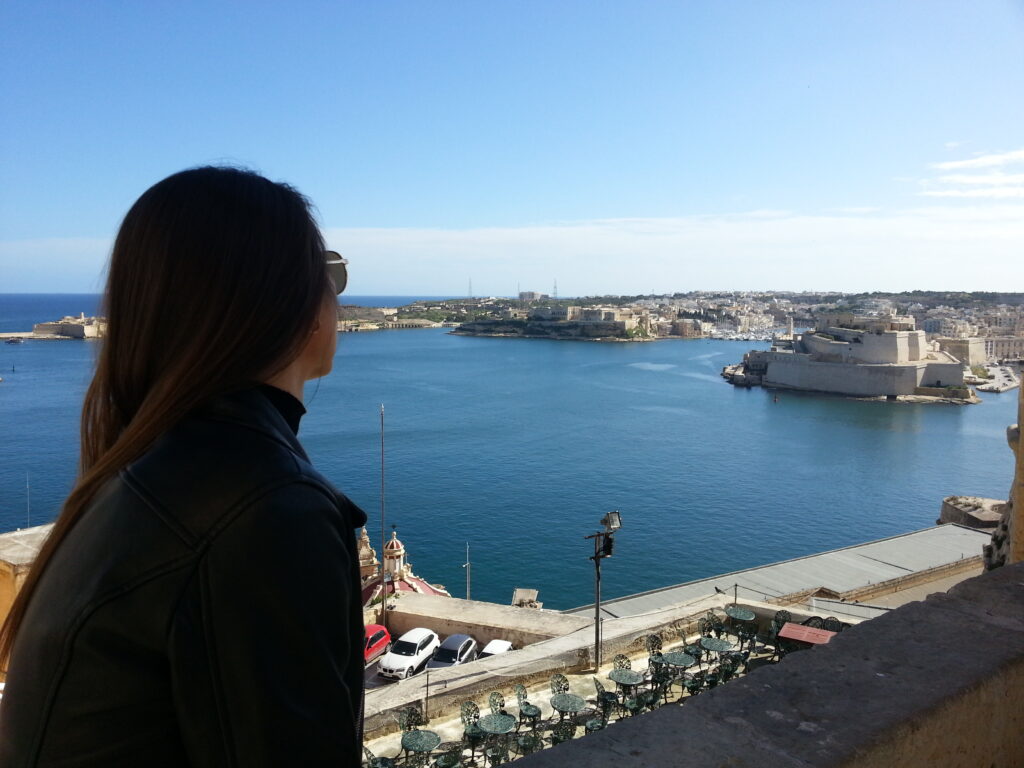
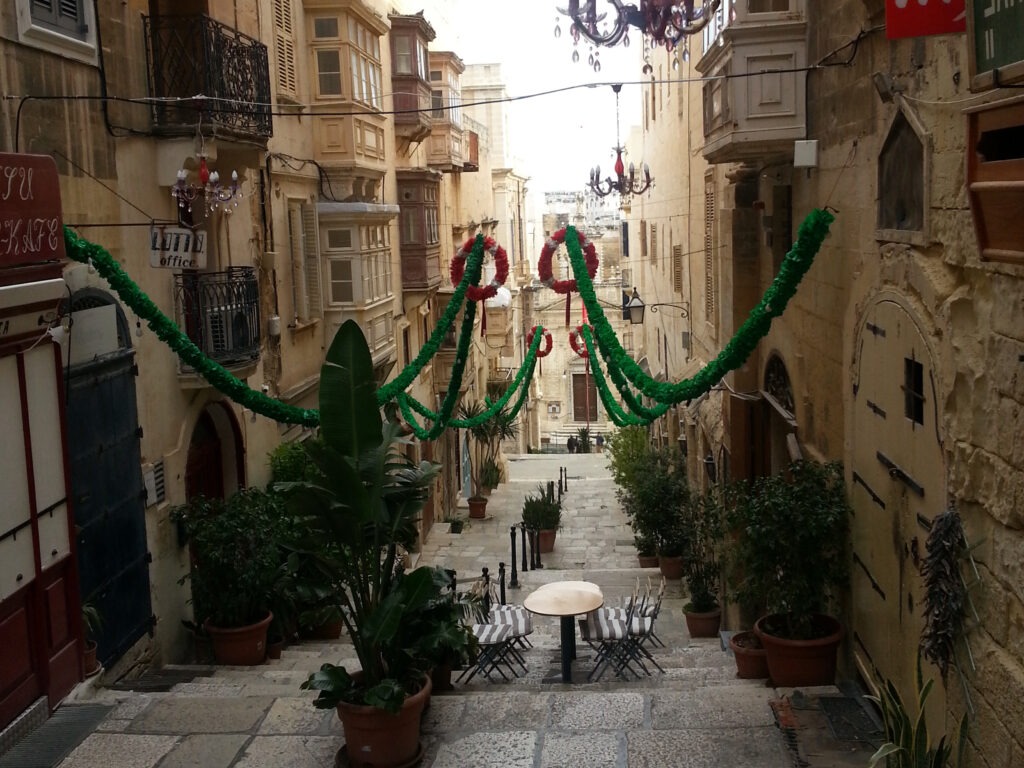


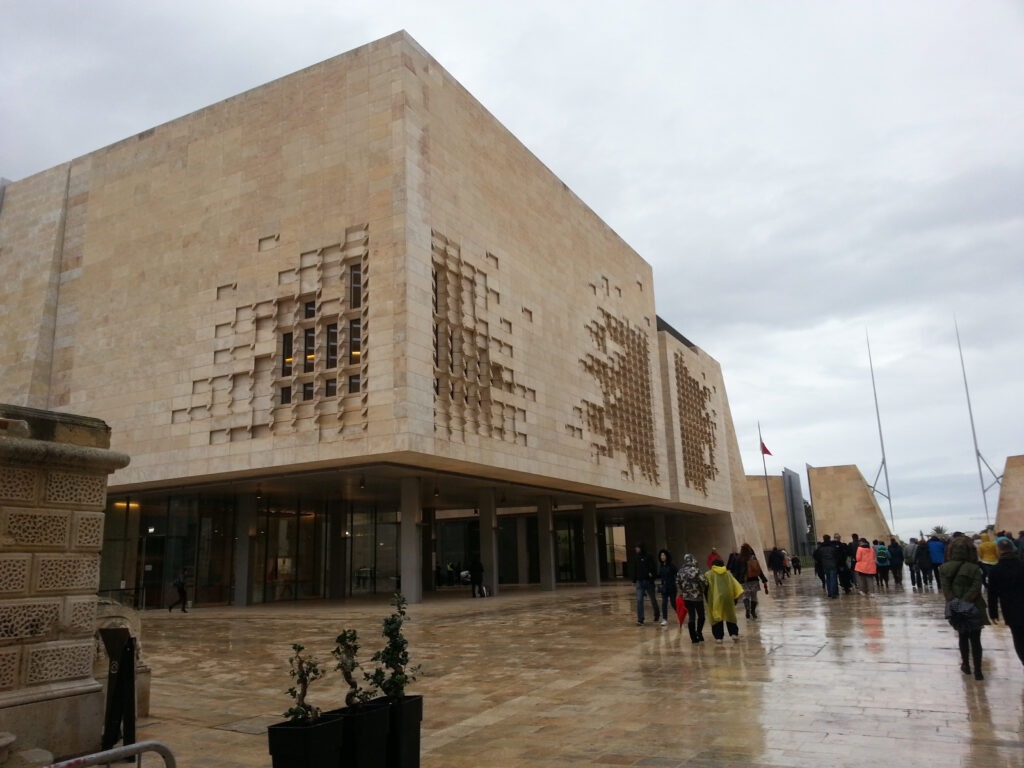

Górne Ogrody Barrakka z widokiem na Fort Saint Angelo i Grand Harbour. To tutaj znajduje się tzw. Saluting Battery czyli Bateria Powitalna, obecnie używana do oddawania ceremonialnych salutów armatnich.
Na przeciwległym brzegu Wielkiego Portu czyli Grand Harbour leżą trzy miasta tworzące swoiste maltańskie trójmiasto a są to Vittoriosa (Birgu), Cospicua (Bormla) i Senglea (Isla). Miasta te stanowią obecnie jeden z najszybciej rozwijających się rejonów turystycznych na wyspie.
Konkatedra św. Jana – rzymskokatolicka konkatedra poświęcona św. Janowi Chrzcicielowi, zbudowana przez joannitów w latach 1572–1577. Skromna z zewnątrz, bogato zdobiona wewnątrz, niegdyś jedna z najbogatszych świątyń w Europie. W Oratorium katedry można podziwiać słynne obrazy Caravaggia.
Budynek parlamentu Malty, otwarty w 2015 r., zaprojektowany w tylu brutalistycznym, znajdujący się tuż za Bramą Miejską
Z Valletty można łatwo podróżować do innych miejsc na wyspie np. do średniowiecznego miasta Mdina lub na piaszczyste plaże Malty. Podróż autobusem do każdej części wyspy jest krótka i niedroga. Do wielu miejsc można również dojść pieszo, np. do Sliemy, która jest oddalona o zaledwie 15-20 minut od stolicy.
Valletta's main attractions:
The Upper Barrakka Gardens overlook Fort Saint Angelo and the Grand Harbour. This is where the Saluting Battery is located, currently used for ceremonial gun salutes.
On the opposite shore of the Grand Harbour lie three cities that form a kind of Maltese tri-city: Vittoriosa (Birgu), Cospicua (Bormla) and Senglea (Isla). These cities are currently one of the fastest growing tourist areas on the island.
Co-Cathedral of St. John – Roman Catholic co-cathedral dedicated to St. John the Baptist, built by the Hospitallers in the years 1572–1577. Modest on the outside, richly decorated on the inside, once one of the richest churches in Europe. In the Oratory of the cathedral you can admire famous paintings by Caravaggio.
The Maltese Parliament Building, opened in 2015, designed in a brutalist style, is located just behind the City Gate
From Valletta it is easy to travel to other places on the island, for example, to the medieval city of Mdina or the sandy beaches of Malta. The bus journey to any part of the island is short and inexpensive. Many places can also be reached on foot, such as Sliema, which is only 15-20 minutes from the capital.
Inne interesujące i warte odwiedzenia miejsca na Malcie:
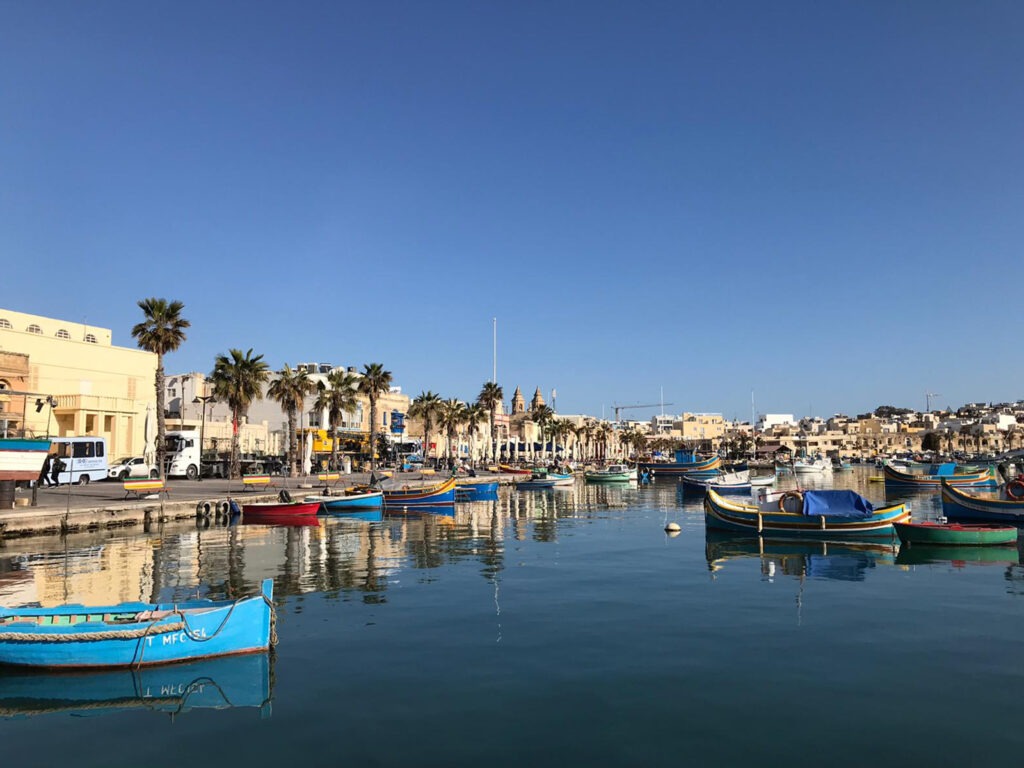

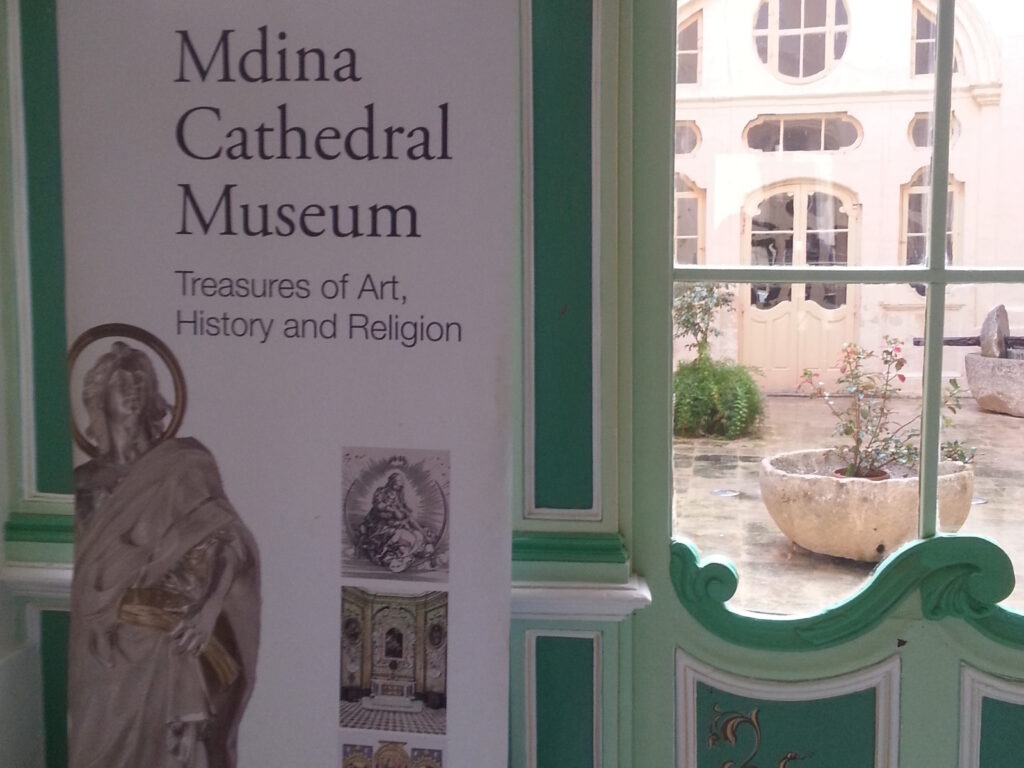
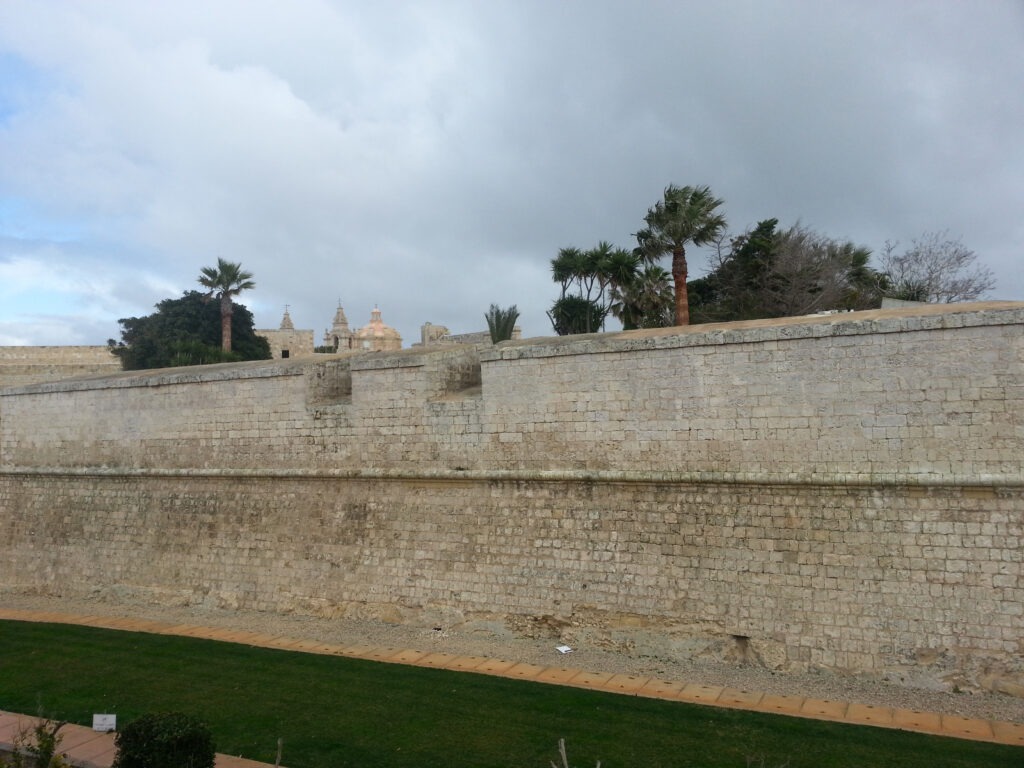
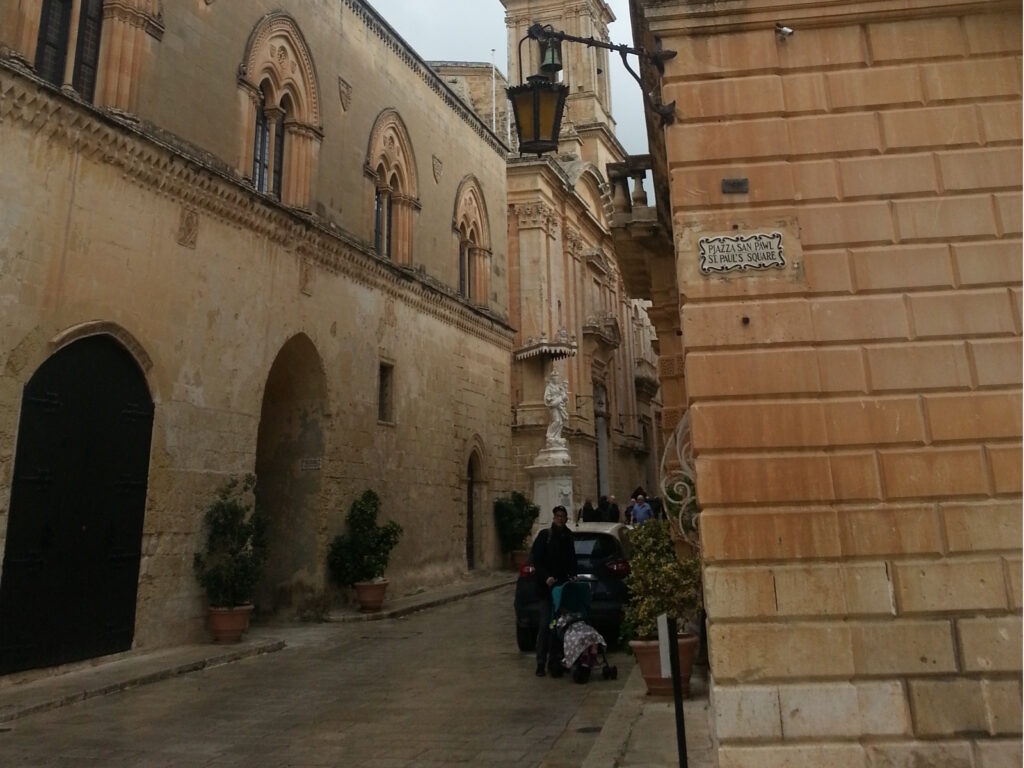
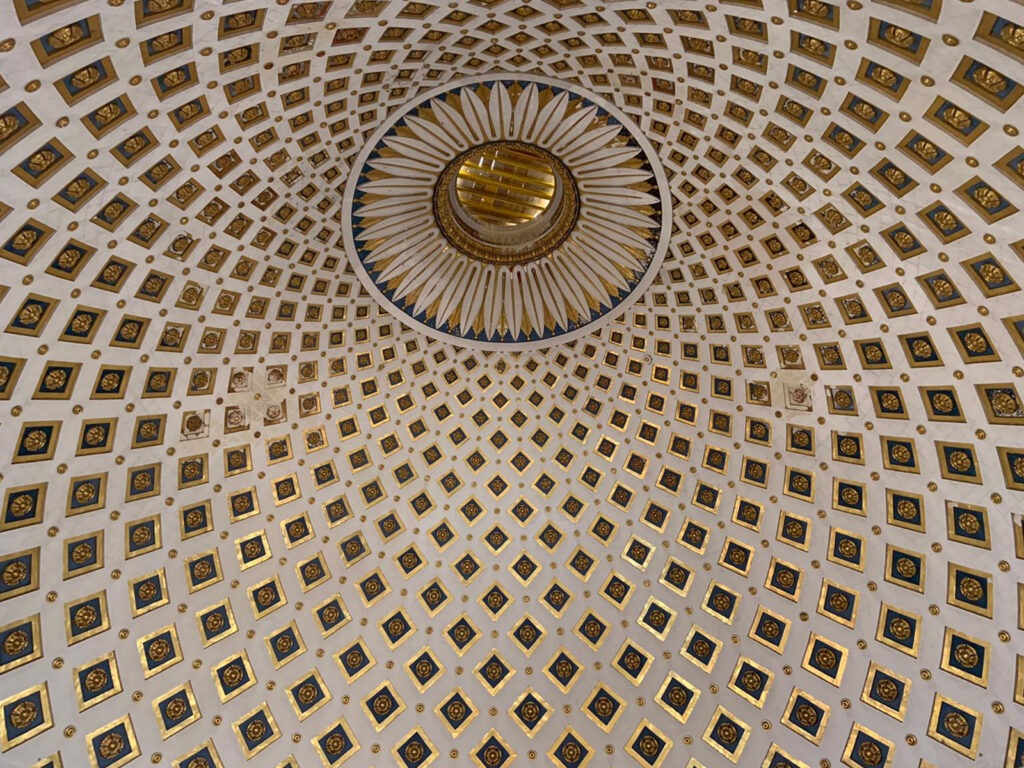

Marsaxlokk. Wioska rybacka z charakterystycznymi kolorowymi łódkami o nazwie luzzu, zacumowanych w porcie, które stanowią swoisty symbol Malty. Marsaxlokk słynie również z największego na wyspie targu rybnego odbywającego się w każdą niedziele do południa.
Mosta. Rotunda w Moście (Sanktuarium Wniebowzięcia Matki Bożej) posiadająca jedną z największych kopuł w Europie. W 1942 roku, podczas popołudniowego nalotu Luftwaffe bomba o wadze 500kg przebiła kopułę i spadła między grupę wiernych, oczekujących na mszę św. Bomba nie wybuchła a taki sam typ bomby, jaka przebiła kopułę (oryginał został zatopiony w morzu), można zobaczyć na tyłach kościoła w przedsionku zakrystii. Miejsce, w którym bomba przebiła kopułę jest nadal eksponowane.
Mdina. Mdina była dawną stolicą Malty. To średniowieczne miasto położone jest w centralnej części wyspy, na wzgórzu, skąd roztacza się szeroki widok na wyspę.
Other interesting and worth visiting places in Malta:
Marsaxlokk. A fishing village with characteristic colorful boats called luzzu, moored in the harbour, which are a kind of symbol of Malta. Marsaxlokk is also famous for the largest fish market on the island, held every Sunday until noon.
Mosta. Rotunda in Most (Sanctuary of the Assumption of the Blessed Virgin Mary) has one of the largest domes in Europe. In 1942, during an afternoon air raid by the Luftwaffe, a 500 kg bomb pierced the dome and fell among a group of believers waiting for Mass. The bomb did not explode and the same type of bomb that pierced the dome (the original was sunk in the sea) can be seen at the back of the church in the vestibule of the sacristy. The place where the bomb pierced the dome is still on display.
Mdina. Mdina was the former capital of Malta. This medieval city is located in the central part of the island, on a hill, from where there is a wide view of the island.
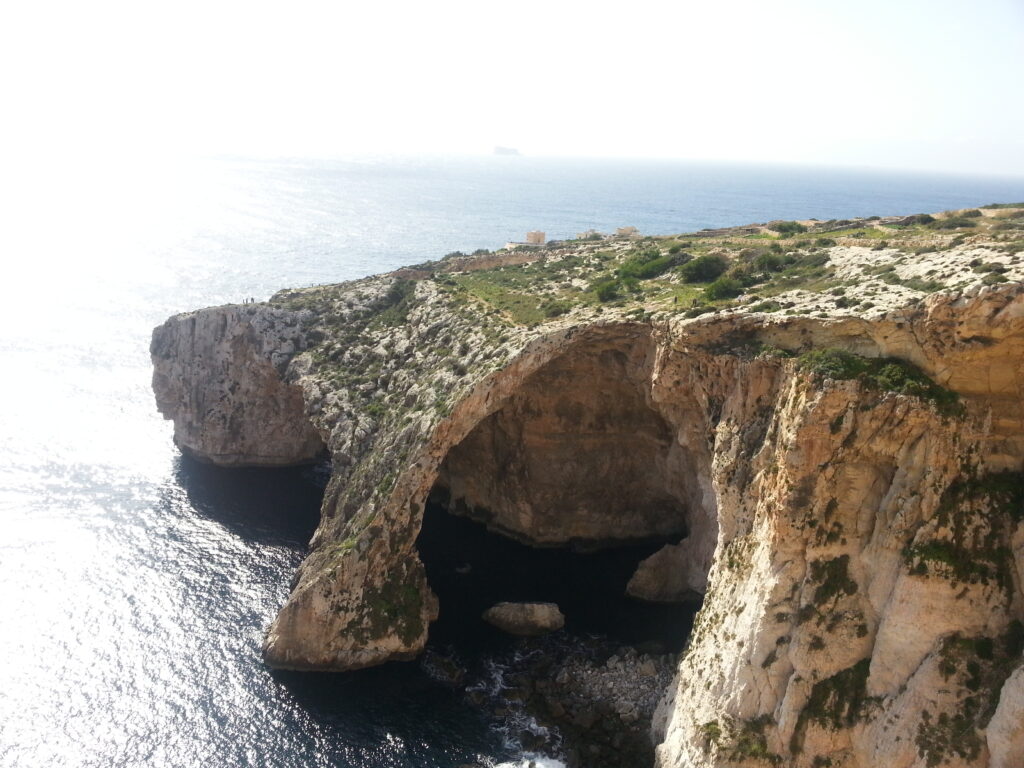

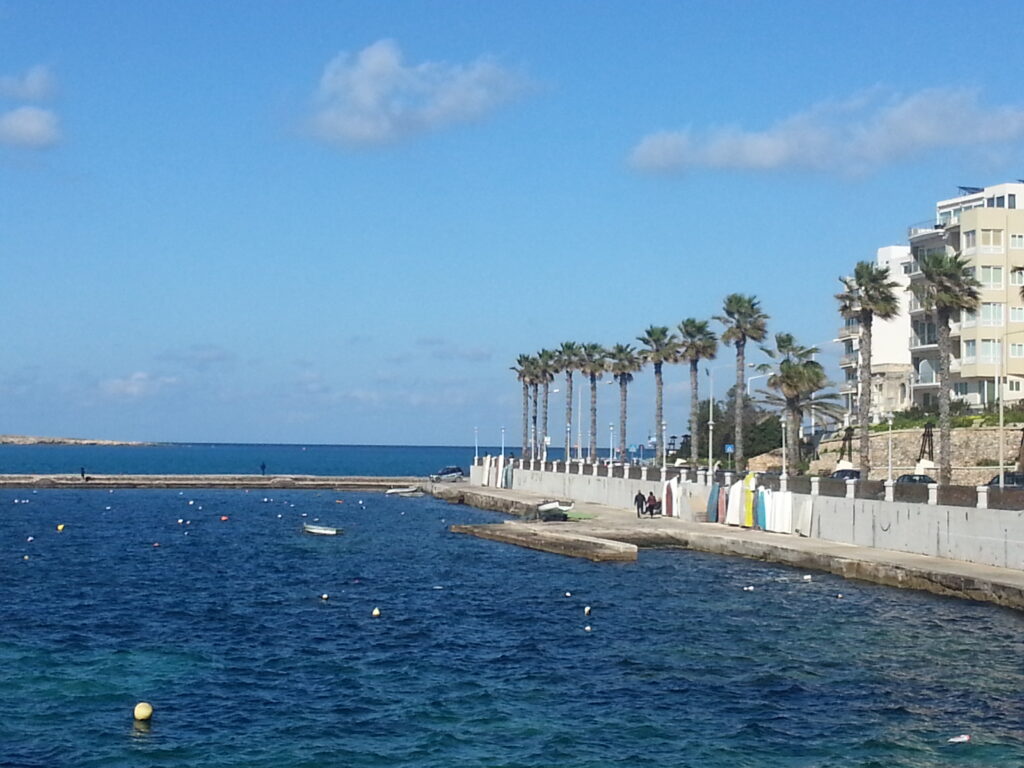
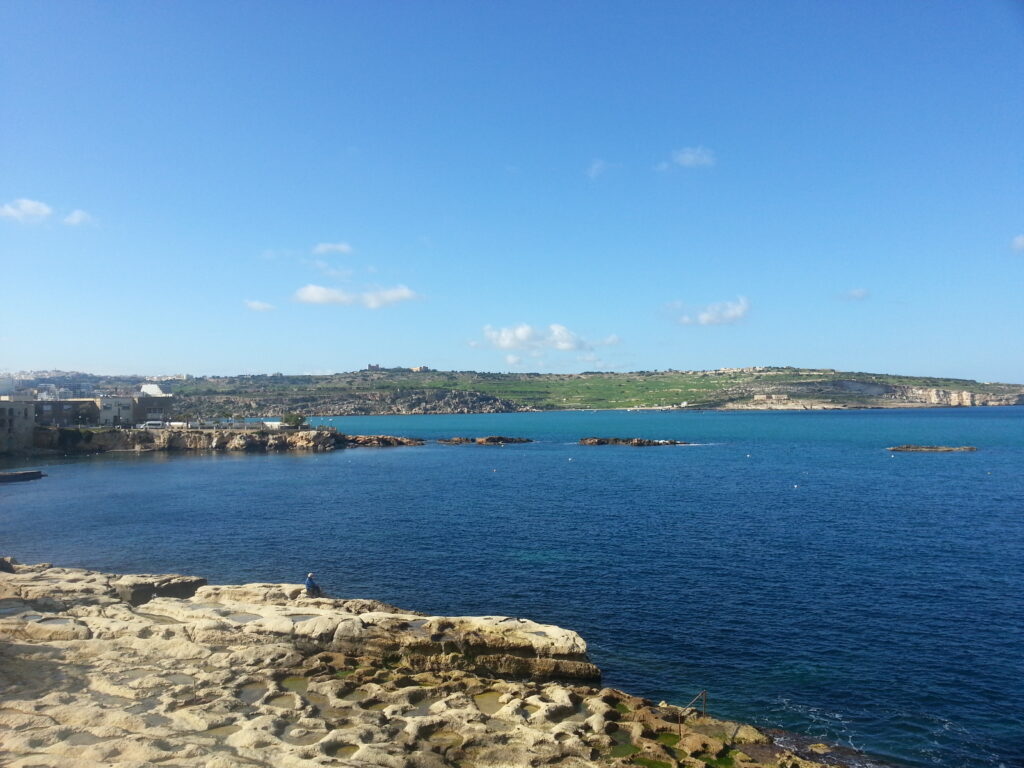
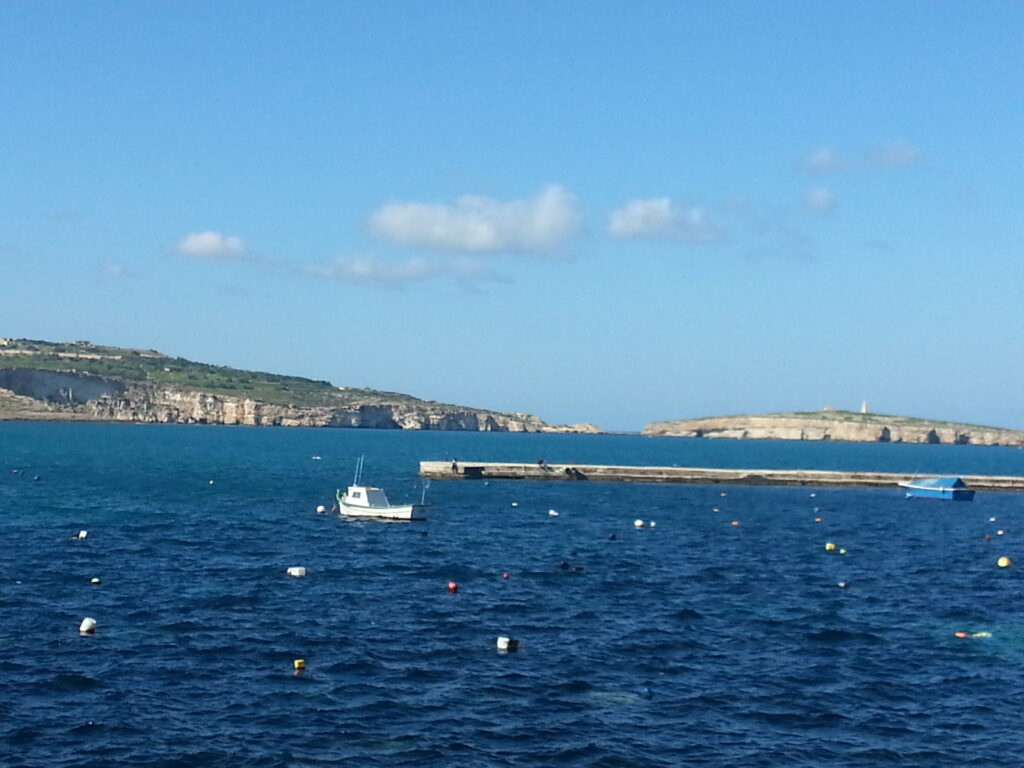
Błękitna Grota (Blue Grotto) – słynna jaskinia na Malcie znajdująca się w południowo-zachodniej części wyspy, pomiędzy Żurrieq i Qrendi; jedna z najpopularniejszych atrakcji Malty, odwiedzana przez tysiące turystów każdego roku.
Klify Dingli (Dingli Cliffs) – najwyższy punkt archipelagu maltańskiego (wys. ponad 200 m); klify usytuowane są na zachodnim wybrzeżu wyspy.
Bugibba. Bugibba to typowo turystyczne miasteczko znajdujące się w zatoce św. Pawła, na północy wyspy, około 15 km od stolicy Malty – La Valetty, w pobliżu dwóch innych maltańskich kurortów: Qawra i Xemxija. Z Bugibby dobrze widoczna jest pobliska wyspa św. Pawła gdzie według legendy rozbił się statek ze św. Pawłem na pokładzie, a rozbitkom udało się zapoczątkować na Malcie chrześcijaństwo. Wyspa nie jest zamieszkała, ale niektórzy turyści chętnie się tam udają. Niedaleko miasteczka znajduje się miejscowość Mellieha, gdzie można wypocząć na piaszczystych plażach. Poza typowo turystycznymi obiektami takimi jak hotele, apartamenty wakacyjne, restauracje, kawiarnie, bary czy kasyna, do ciekawszych miejsc Buggiby należą: Narodowe Akwarium Malty gdzie pływają płaszczki i rekiny; Maltańska Kolekcja Klasycznych Samochodów gdzie można podziwiać zabytkowe auta; odrestaurowany kościół św. Pawła Rozbitka z XIV wieku.
Blue Grotto – a famous cave in Malta located in the southwestern part of the island, between Żurrieq and Qrendi; one of the most popular attractions in Malta, visited by thousands of tourists every year.
Dingli Cliffs – the highest point of the Maltese archipelago (over 200 m high); the cliffs are situated on the west cost of the island
Bugibba is a typical tourist town located in St. Paul’s Bay, in the north of the island, about 15 km from the capital of Malta – La Valletta, near two other Maltese resorts: Qawra and Xemxija. From Bugibba, you can clearly see the nearby island of St. Paul, where according to legend, a ship with St. Paul on board was wrecked, and the castaways managed to introduce Christianity to Malta. The island is uninhabited, but some tourists like to go there. Not far from the town is the town of Mellieha, where you can relax on sandy beaches. Apart from typical tourist facilities such as hotels, holiday apartments, restaurants, cafes, bars and casinos, the more interesting places in Bugibba include: the Malta National Aquarium, where stingrays and sharks swim; the Malta Classic Car Collection, where you can admire vintage cars; the restored church of St. Paul the Castaway from the 14th century.

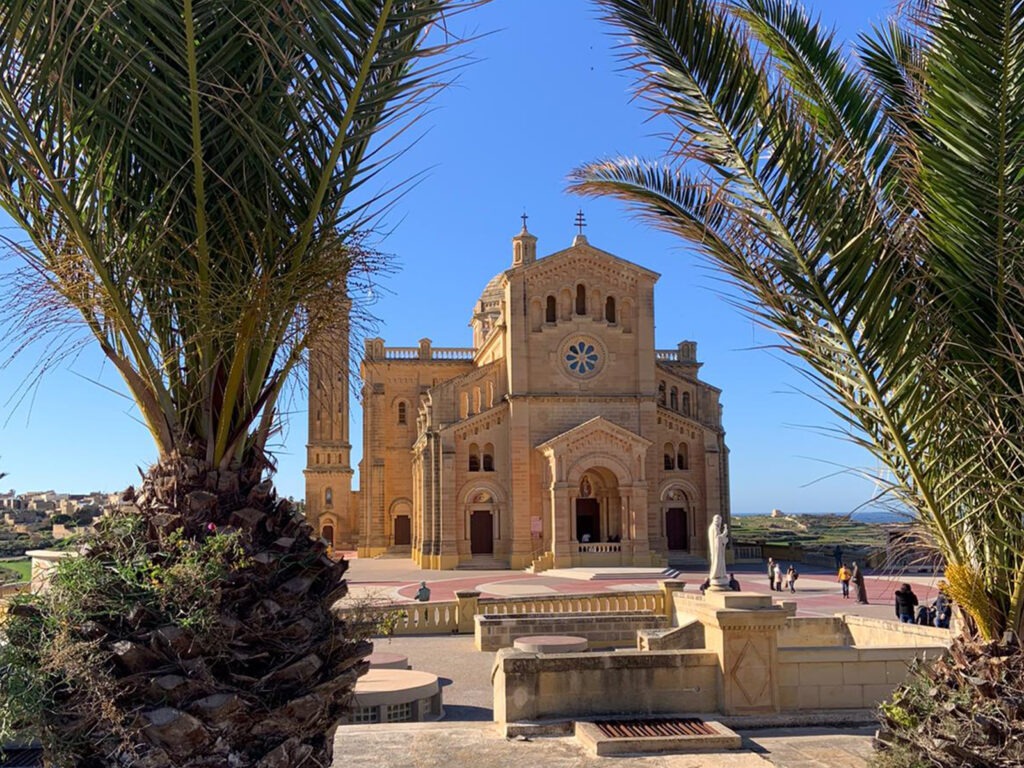


Gozo
Będąc na Malcie warto również odwiedzić pobliską wysepkę , czyli Gozo, która jest drugą pod względem wielkości wysp w archipelagu Wysp Maltańskich a jej powierzchnia to zaledwie 67 km². Stolicą Gozo jest Victoria, która przed 1897 rokiem funkcjonowała pod nazwą Rabat. To tutaj znajdują się najważniejsze urzędy na wyspie.
Prom na Gozo z Valetty trwa ok. 40 min a jego koszt to ok.23 euro.
Cytadela w Victorii – stolicy Gozo; służąca na przestrzeni wieków jako ochrona przed atakami korsarzy oraz Saracenów, usytuowana na lekkim wzniesieniu, które pełniło funkcje obronne już w epoce brązu. Jest to największa atrakcja turystyczna na Gozo oraz jednocześnie główny punkt orientacyjny na wyspie.
Bazylika/sanktuarium Ta’ Pinu należąca do najważniejszych w kraju, stanowiąca ośrodek pielgrzymek Maltańczyków ale również odwiedzana przez pielgrzymów z całego świata.
Gozo
While in Malta, it is also worth visiting the nearby island, Gozo, which is the second largest island in the Maltese archipelago and has an area of only 67 km². The capital of Gozo is Victoria, which was called Rabat before 1897. This is where the most important offices on the island are located.
The ferry to Gozo from Valletta takes about 40 minutes and costs about 23 euros.
The Citadel in Victoria – the capital of Gozo; serving for centuries as a defense against attacks by buccaneers and Saracens, situated on a slight elevation, which played a defensive role already in the Bronze Age. It is the largest tourist attraction on Gozo and at the same time the main landmark on the island.
The Ta’ Pinu Basilica/Sanctuary is one of the most important in the country, a centre of pilgrimage for the Maltese but also visited by pilgrims from all over the world
Warto dodać, że Malta ze względu na swoje walory krajobrazowe oraz architekturę służyła i nadal służy wielu twórcom filmowym za miejsce akcji.
Do filmów kręconych na Malcie należą m.in.:
Gladiator, Game of Thrones, No Woman is an Island, Napoleon, Jurassic World Dominion, Warrior, Murder on the Orient Express, Conan the Barbarian, The Da Vinci Code, Troy, Popeye.
It is worth mentioning that Malta, due to its landscape and architecture, has served and still serves as a location for many filmmakers.
Some of the films shot in Malta include:
Gladiator, Game of Thrones, No Woman is an Island, Napoleon, Jurassic World Dominion, Warrior, Murder on the Orient Express, Conan the Barbarian, The Da Vinci Code, Troy, Popeye.
Podsumowując
Dlaczego Malta?
1. Słońce – to tutaj słońce świeci niemal 360 dni w roku a średnia roczna temperatura wynosi ok. 20°C
2. Muzeum pod gołym niebem – bogactwo zabytków na każdym kroku
3. Łatwość przemieszczania się – małe odległości miedzy poszczególnymi miastami pozwalają zwiedzić całą wyspę w krótkim czasie; cała wyspa jest bowiem wielkości Krakowa
4. Pyszna eklektyczna kuchnia – mieszanka wpływów włoskich, arabskich i brytyjskich
5. Angielski, angielski, angielski – idealne miejsce aby podszlifować swój angielski; Malta od wielu lat słynie z całorocznych kursów języka angielskiego
To sum up –
Why Malta?
1. Sunshine – here the sun shines almost 360 days a year and the average annual temperature is about 20°C
2. Open-air museum – a wealth of monuments at every step of the way
3. Ease of travel – short distances between individual cities allow you to visit the entire island in a short time; the whole island is the size of Krakow
4. Delicious eclectic cuisine – a mixture of Italian, Arabic and British influences
5. English, English, English – the perfect place to brush up on your English; Malta has been famous for its year-round English courses for many years

